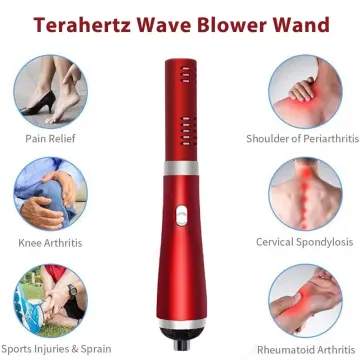Teslacare Terahertz Device Review – Best Therapy Tech
This article provides a comprehensive look at the evolving field of terahertz therapy and how the Teslacare terahertz device fits into today’s health tech landscape. In this piece, you’ll encounter an in-depth analysis designed to illuminate the science, practical applications, and user experiences around the topic. Throughout, we highlight the keyword phrase teslacare terahertz device review to anchor the discussion and guide readers who are evaluating their options in this niche. By the end, you’ll have a clearer sense of whether this device belongs in your wellness toolkit and how it compares to other modalities you may be considering.
Understanding Terahertz Therapy and Its Applications
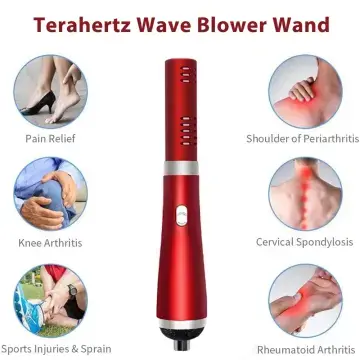
Terahertz therapy sits at the intersection of physics, biology, and wellness technology. As researchers map the interactions between terahertz waves and biological tissues, more people are exploring how this non-ionizing spectrum might influence cellular processes, inflammation, circulation, and recovery. In this section, we’ll establish a foundation for understanding what terahertz therapy is, its historical context, and the kinds of health goals it is often positioned to support.
Terahertz waves occupy a unique niche in the electromagnetic spectrum. They lie between the microwave and infrared regions, carrying enough energy to interact with molecular structures without the high-energy ionizing effects associated with X-rays. This combination—safety with potential biological activity—has spurred ongoing exploration into applications such as pain relief, detoxification pathways, and skin health. While the science is still developing in many areas, patients and wellness enthusiasts are increasingly curious about practical benefits, ease of use, and cost considerations.
The field’s history is a tapestry of incremental advances, pilot studies, and cautious optimism. Early work focused on spectroscopy and imaging, but later investigations began to probe therapeutic outcomes in areas like inflammatory regulation, microcirculation, and tissue repair. As devices become more compact and user-friendly, terahertz therapy moves from a laboratory curiosity toward consumer-facing wellness tools. When evaluating devices in this space, it’s important to balance expectations with the current evidence base, recognizing that real-world results can vary based on exposure parameters, individual health status, and consistency of use.
In daily life, many users view terahertz therapy as a complementary approach rather than a stand-alone treatment. It is often considered alongside conventional therapies, physical therapy, dermatology regimens, and lifestyle interventions. This integrated perspective can help users set realistic goals, measure progress over weeks or months, and avoid overpromising outcomes. For anyone curious about “what is terahertz therapy,” a practical takeaway is that it is about applying controlled terahertz energy to targeted areas to potentially influence cellular processes, reduce discomfort, and support recovery. To form a balanced expectation, readers should examine clinical guidance, product specifications, and user testimonials before committing to a device or program.
In exploring the Teslacare terahertz device, it is helpful to keep in mind the broader ecosystem of terahertz therapies and competing modalities. Some comparisons arise when evaluating terahertz therapy against red light therapy or traditional physiotherapy. Each modality has its own mechanism of action, therapy cadence, and potential synergies with lifestyle factors such as sleep hygiene, nutrition, and exercise. As you read, you’ll encounter nuanced discussion about where terahertz therapy might fit best within a personal health plan, rather than portraying it as a universal cure-all.
Key terms you’ll encounter include device efficacy, exposure duration, frequency settings, and safety profiles. It is essential to approach each claim with a critical eye and to verify that any device you consider adheres to safety standards and manufacturer guidelines. When researching teslacare terahertz device review content, you’ll want to weigh the device’s technical specifications, warranty terms, customer support, and the availability of credible user feedback. The goal is to empower readers to make informed decisions that align with their health objectives, budgets, and comfort levels with new technology.
In this section, we have laid the groundwork for understanding what terahertz therapy is, why people are exploring it, and how devices like Teslacare may be positioned within a broader wellness toolkit. In the next sections, we’ll move from theory into practical evaluations, focusing on performance, pricing, safety considerations, and real-world use cases that matter most to readers who are actively seeking effective, credible solutions.
Benefits of Terahertz Therapy
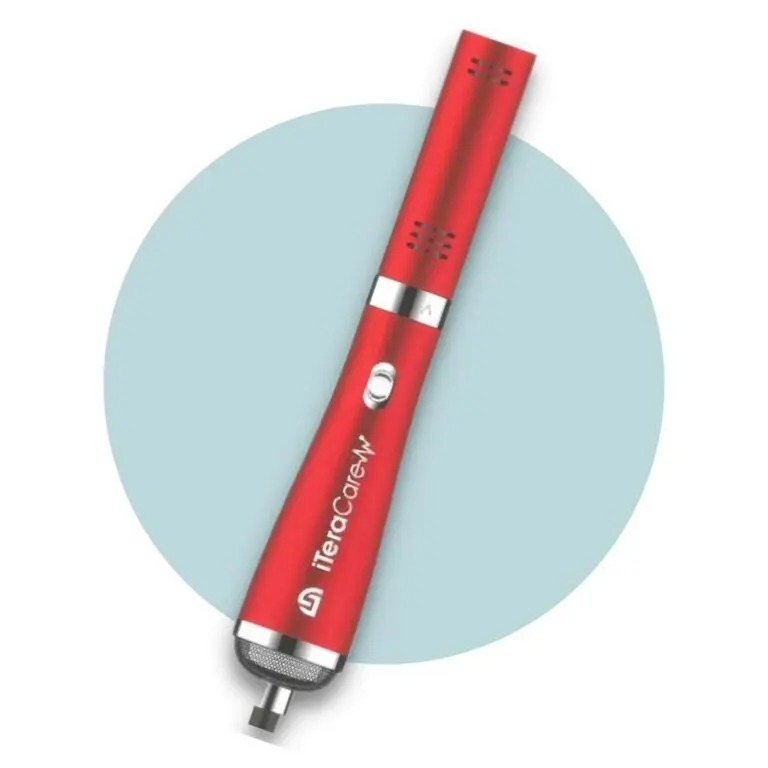
Terahertz therapy is often discussed in terms of its potential benefits across several domains of health and well-being. This section delves into the common health goals people pursue with terahertz therapy and explains how exposure parameters can influence outcomes. The aim is to provide a balanced view that acknowledges both the promise and the current limitations of this emerging modality.
A central theme in terahertz therapy is the potential for pain relief and reduced inflammation. Users frequently report perceptual improvements in discomfort associated with musculoskeletal conditions, athletic recovery, and chronic pain syndromes. It’s important to note that subjective sensations of relief should be interpreted with care and ideally corroborated by consistent patterns across multiple sessions and corroborating signs such as reduced swelling or improved range of motion. When readers ask, “can terahertz therapy help with pain?” the answer—based on early experiences and user narratives—suggests that some individuals perceive meaningful improvements, especially when therapy is used as part of a comprehensive pain management plan rather than as a stand-alone remedy.
Detoxification and circulation often surface in discussions around terahertz therapy. Proponents describe processes that may improve microcirculation, facilitate metabolic exchanges at the tissue level, and support the body’s natural detox pathways. While this is an appealing claim, it is essential to separate anecdotal impressions from rigorous physiological measurements. Consumers should approach detox-oriented expectations with a critical mindset, seeking clear guidance from device manufacturers about safe usage patterns, exposure times, and contraindications. In practice, users who adopt a structured routine—consistent sessions, hydration, and a healthy lifestyle—t may experience incremental benefits that accumulate over weeks or months.
Skin health is another arena where terahertz energy is often marketed as beneficial. Some users report improved skin texture, hydration, and tone with regular exposure, particularly when integrated into a broader skincare regimen that combines cleansing, moisture, and sun protection. It’s worth noting that dermatological outcomes can be highly individualized, influenced by baseline skin condition, age, and concurrent skincare ingredients. For readers exploring this domain, a cautious approach is advisable: start with shorter sessions, observe skin responses, and discontinue if irritation or adverse reactions occur.
When evaluating the broader implications of terahertz therapy, it’s helpful to compare it with other modalities such as red light therapy or traditional physical therapy. Each approach uses distinct mechanisms and schedules. Red light therapy, for instance, operates in the visible to near-infrared spectrum and is often praised for supporting cellular energy production and healing processes. Terahertz therapy, while sharing some healing-oriented aims, relies on different energy interactions with tissues. For readers who are weighing options, understanding these nuances can lead to smarter decisions about which modality—or combination of modalities—best supports their goals.
As with any therapeutic technology, safety and individualized assessment remain paramount. Users should consult healthcare professionals when they have underlying conditions, are pregnant, have implanted devices, or are taking medications that might interact with heat-based therapies. It’s also prudent to review device instructions for safe operating guidelines, including recommended session duration, distance from skin, and frequency of use. By approaching terahertz therapy with curiosity balanced by vigilance, readers can discover whether its benefits align with personal health aspirations and lifestyle constraints.
With the above context in place, the discussion now turns to a practical examination of the Teslacare terahertz device: what it offers, how it works, and what makes it stand out in a crowded market of wellness devices. The goal is to connect theory with hands-on evaluation and to highlight the experiences of real users in meaningful, credible ways.
Introducing the Teslacare Terahertz Device
The Teslacare terahertz device is designed to deliver controlled terahertz energy to targeted areas of the body, with an emphasis on ease of use, safety, and adaptability for home wellness routines. From a product design perspective, the device tends to emphasize portability, intuitive controls, and clear guidance on exposure times. For readers exploring the question of “what makes Teslacare different?” the answer often lies in a combination of user-friendly ergonomics, a thoughtful user manual, and a focus on delivering consistent energy delivery across sessions.
Technology-wise, the Teslacare device uses terahertz energy within prescribed ranges intended to interact with superficial tissue layers and cellular environments in a non-invasive manner. Prospective users are particularly attentive to features such as adjustable exposure durations, treatment modes appropriate for different body areas, and built-in safety protections that help prevent overexposure. In addition to hardware considerations, many buyers look for companion software or mobile app experiences that track usage history, offer reminders, and provide basic progress insights. For those who prioritize a “Buyer’s Guide” mindset, the Teslacare system’s value proposition tends to hinge on a blend of practical usability, perceived comfort, and the consistency of clinical-sounding results that align with personal health objectives.
From a marketing and consumer perspective, Teslacare often emphasizes its positioning as a modern wellness device suitable for daily or weekly sessions, depending on individual tolerance and goals. The device’s messaging tends to highlight pain relief, improved skin health, and enhanced circulation as core benefits, while also acknowledging typical considerations around safety and the importance of following the manufacturer’s guidelines. As with any emerging technology in the consumer health space, discerning buyers should look for clear documentation on energy specifications, recommended usage patterns, and verifiable user feedback that supports claims of efficacy.
In the context of a comprehensive review, readers should pay attention to how Teslacare handles customer support, warranty terms, and the availability of spare parts or replacement components. A reliable warranty and accessible service can significantly influence long-term satisfaction, especially for devices that require regular use. While many testimonials emphasize symptom relief or subjective improvements, it’s beneficial to cross-reference these impressions with objective indicators when available, such as changes in sleep quality, mobility metrics, or dermatological outcomes reported over time.
As you consider whether to pursue a Teslacare purchase, it’s helpful to compare its core attributes with other devices on the market, including competing terahertz products and alternative therapies. In particular, readers who are evaluating “Teslacare terahertz device price” and “Teslacare terahertz device coupon” may be looking for pricing transparency, promotional offers, and total cost of ownership that reflect long-term use. In the broader ecosystem, you’ll also encounter discussions about how Teslacare stacks up against modalities like ionic devices or quantum therapy devices. The aim is to provide a nuanced view that respects both the aspirational language of wellness marketing and the practical realities of home-use devices.
In closing this introductory overview, the Teslacare terahertz device emerges as a thoughtful entrant in a growing category of personal wellness technology. It promises an approachable pathway to explore terahertz energy’s potential benefits while recognizing that individual outcomes will vary. The subsequent sections will dive into an in-depth assessment of performance, user experiences, pricing considerations, safety, and comparative analyses—particularly the “Teslacare vs Ionic Care” conversation—so readers can make well-informed purchasing decisions.
In-Depth Review of the Teslacare Terahertz Device
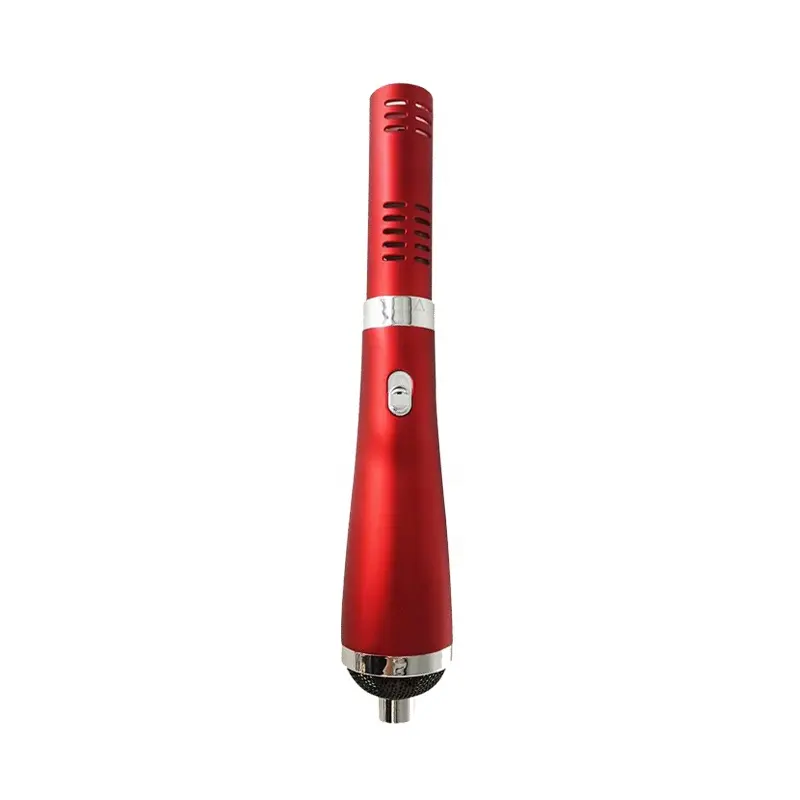
A rigorous evaluation of any wellness device should combine objective data, user experiences, and a critical look at the claims a manufacturer makes. In this section, we examine how the Teslacare terahertz device performs in real-world contexts, what users say about its effectiveness for pain relief and inflammation, and how it compares to alternatives like Ionic Care. The aim is to provide a balanced narrative that helps readers gauge value, reliability, and fit with their health goals.
Performance is inherently personal, and many readers seek a clear sense of what they might expect from routine use. Key indicators include perceived pain reduction, improvements in sleep quality, and subjective shifts in mobility or daily functioning. Anecdotal reports can be compelling, but they are most useful when viewed alongside a transparent account of the device’s technical parameters, usage guidelines, and any safety considerations. In discussing the Teslacare device, we look for consistency across multiple experiences and a thoughtful interpretation of how terahertz exposure relates to symptoms over time.
From a practical standpoint, the user experience often centers on ergonomics, ease of setup, and the intuitiveness of the control interface. A device that is comfortable to hold, simple to operate, and easily integrated into a daily routine tends to see higher adherence, which can translate into more meaningful outcomes. The Teslacare device’s design choices, such as handle shape, surface materials, and clear calibration indicators, can influence daily use, especially for individuals who are managing chronic conditions, recovering from injury, or using therapy during limited windows of time.
Feedback on effectiveness for pain management and inflammation has a wide spectrum. Some users report tangible, incremental improvements in localized discomfort, particularly after a series of sessions or a structured weekly plan. Others describe subtler shifts—less stiffness after activity, quicker recovery, or improved tolerance of movement. In a field where placebo effects and natural variability can influence experiences, it is valuable to triangulate personal responses with consistent usage patterns and a clear, progressive approach to treatment duration and frequency. When evaluating teslacare terahertz device review content, readers should look for patterns across multiple reviews, including before-and-after impressions and objective notes on symptom trajectories.
A critical component of the Teslacare assessment is a careful look at safety, contraindications, and recommended usage boundaries. The device’s safety features, such as automatic shutoff, distance guidance, and protection against overexposure, contribute to user confidence and reduce risk. Users should follow the manufacturer’s guidelines for session length, spacing between sessions, and any intervals recommended after intense activity or exposure to other therapies. As with any energy-based modality, individual responses can be influenced by factors such as skin sensitivity, temperature, and existing medical conditions. Readers should prioritize conservative starts, gradual progression, and attentive monitoring for any adverse effects. If you experience unusual redness, warmth beyond expected comfort, or persistent irritation, discontinue use and consult a healthcare professional.
When comparing Teslacare to Ionic Care or other competing devices, the analysis naturally shifts toward feature sets, pricing, and intended use cases. The Ionic Care device, for example, may emphasize different energy parameters, ergonomics, or supporting software features. In evaluating the two options, readers should consider their primary goals (pain relief, arthritis support, skin health, or circulation), preferred session cadence, and budget. A balanced comparison emphasizes not only what each device claims to do, but also how real-world users experience those claims over time, including any reported changes in daily functioning, sleep quality, or activity tolerance. The takeaway for readers who are weighing “Teslacare vs Ionic Care” is that the best choice often aligns with individual health objectives, ease of integration into a routine, and trust in the ongoing support provided by the product ecosystem.
Pricing is another essential pillar of the in-depth review. The Teslacare terahertz device price should be examined in the context of its long-term value, potential cost savings from reduced dependence on other therapies, and the typical lifespan of the device’s components. A transparent pricing analysis helps readers assess whether the device represents a sound investment given their expected usage, preferred treatment duration, and the likelihood of ongoing maintenance or accessory purchases. In tandem with price considerations, readers should seek information about warranties, customer support quality, and return policies, all of which contribute to perceived value and confidence in a purchase.
Safety and side effects deserve explicit attention, even when devices are marketed as safe and non-invasive. Common, manageable side effects—such as transient warmth, mild redness, or the need for hydration after sessions—should be contrasted with rarer adverse responses that would warrant medical consultation. A thorough review includes guidance on safe usage, recommended session frequencies, and clear red flags that would necessitate stopping use. This grounded approach helps readers differentiate between typical, mild reactions and more serious concerns that require professional advice.
In sum, the teslacare terahertz device review should present a nuanced portrait: some users may notice meaningful benefits with consistent use, particularly for targeted pain relief and skin health, while others may experience more modest improvements or variable outcomes. The device’s value proposition rises when it is part of a comprehensive wellness plan that includes healthy sleep, balanced nutrition, targeted physical activity, and, where appropriate, guidance from healthcare providers. The next sections will dive deeper into specific applications, including how the device performs for pain relief, arthritis, skin health, and circulation, while continuing to maintain a critical lens on safety, pricing, and comparative effectiveness.
Performance Evaluation
Performance evaluation hinges on both objective impressions and subjective experiences. In this subsection, we explore what users typically notice during and after Teslacare sessions, how these outcomes accumulate over time, and what factors might amplify or dampen results. Readers who prioritize evidence-based outcomes will appreciate a careful balance of reported improvements and the acknowledgment that individual responses vary.
Users often describe a sense of warmth, localized comfort, and a subjective loosening of stiffness following sessions. These sensations can be encouraging signals that the device is delivering energy to the treated areas, although it’s important to recognize that such experiences are not uniform across all users and are influenced by baseline health status and adherence to a regular schedule. A pattern of progressive relief—especially with a consistent routine over several weeks—tends to align with the expectations set by many wellness devices in this category. However, readers should avoid overgeneralizing a single experience as proof of universal efficacy, and instead look for corroborating patterns among multiple user stories and, where possible, objective indicators like improved mobility or sleep metrics.
In terms of inflammation and tissue recovery, some users report measurable comfort improvements that enable more active daily living or better performance during physical tasks. The strength of these reports often correlates with adherence to recommended exposure durations and spacing, as well as the timing of sessions relative to physical activity. It’s important to emphasize that terahertz therapy is typically not a substitute for established medical treatments when those therapies are indicated. For readers evaluating the Teslacare device, the value can lie in a complementary role—supporting recovery, reducing mild inflammatory discomfort, and enhancing overall well-being when used within a broader treatment plan. The most credible testimonials emerge when users consistently apply the device over weeks and note gradual changes that align with their recovery goals, rather than sudden, dramatic transformations.
The device’s ergonomics and user interface can influence perceived performance. A comfortable grip, intuitive controls, and clear indicators for session progress help users stay engaged and adhere to a planned routine. When evaluating performance, it’s useful to consider not only pain relief and mobility improvements but also how easy the device is to integrate into daily life. A device that requires complex setup or imposes a steep learning curve can hinder long-term use, regardless of its theoretical benefits. For readers who care about practical performance, the Teslacare device’s design and user experience often serve as meaningful differentiators that support ongoing engagement with therapy sessions.
In the broader ecosystem of terahertz devices, performance comparisons with other options—such as nearby competition in tone, energy delivery, and usability—can clarify where Teslacare fits best. People evaluating “Teslacare terahertz device price” often look for performance-to-cost considerations, ensuring that investments in this category are justified by the practicality and durability of the product, as well as its capacity to support their health goals over time. The teslacare terahertz device review becomes more robust when those performance attributes are weighed against user expectations, the quality of the customer support experience, and the device’s track record across diverse user populations.
Overall, the performance narrative for teslacare terahertz therapy remains nuanced. Some users experience meaningful comfort gains and enhanced functional tolerance, while others may observe more modest effects. The device’s value grows when integrated into a holistic approach to pain management, mobility, skincare, and overall vitality, with realistic expectations and careful monitoring of progress over several weeks. The next subsection examines how Teslacare stacks up against Ionic Care in terms of features, target users, and practical implications in daily life.
Teslacare vs Ionic Care
Comparing Teslacare to Ionic Care invites a closer look at design philosophies, feature sets, and intended use cases. Both devices sit within the broader category of home-based energy therapies, yet they may appeal to different audiences based on their specific strengths, ergonomics, and value propositions. Here, we dissect how the two devices relate to each other and what that means for prospective buyers seeking the best fit for their needs.
In terms of feature emphasis, Teslacare tends to highlight user-friendly ergonomics, straightforward operation, and a clear path to integrating terahertz exposure into a daily routine. Ionic Care, by contrast, might position itself with a different emphasis—perhaps prioritizing a particular energy parameter range, a different treatment cadence, or complementary design traits. These differences shape the decision criteria for users who are weighing “Teslacare vs Ionic Care” as part of their research phase. Readers should consider the types of symptoms they are targeting, as well as personal preferences for ease of use, portability, and serviceability.
From a clinical perspective, both devices aim to deliver non-invasive energy-based therapy, but the practical outcomes may hinge on exposure protocols, session length, and the frequency of use. While one device may excel in ease of adoption for busy individuals, another might offer more granular control over energy settings or mode options that suit specific treatment plans. The evaluation should incorporate user feedback related to pain reduction, skin-related improvements, and circulation effects, while also acknowledging that individual responses will vary based on factors such as health status and adherence to recommended usage guidelines.
Market positioning and audience targeting play a significant role in how these devices are perceived. Teslacare may appeal to consumers seeking a balance of affordability, usability, and a broad range of wellness promises, whereas Ionic Care could attract users who value a particular clinical narrative or a comfortable fit within a broader ecosystem of therapies. When weighing these products, readers should consider not only the feature lists but also available resources such as warranty terms, customer support quality, and the long-term value offered by each option. The choice boils down to alignment with personal goals, daily habits, and the level of confidence readers have in the supporting information and community feedback around each device.
For readers who are researching global accessibility—especially in markets where the Teslacare terahertz device is promoted through affiliate channels—it’s prudent to examine availability, shipping options, and potential regional variations in pricing. While both devices exist within the same therapeutic category, practical decisions are often anchored in the specifics of how each device integrates into a user’s lifestyle, including travel-friendliness, the ability to customize settings, and the social proof of testimonials from a diverse user base. In summary, while the teslacare terahertz device review can reveal meaningful similarities, the real differentiation tends to emerge when you consider personal preferences, use case scenarios, and the level of confidence you have in the product’s ongoing support ecosystem.
Teslacare Terahertz Pricing Analysis
Pricing is a practical lens through which readers evaluate whether a device makes sense for their budget and long-term wellness plans. A thorough pricing analysis should account for the upfront cost, potential discounts, warranty terms, ongoing accessory needs, and the anticipated lifespan of the device. In this section, we break down how to interpret the price tag, what you’re paying for, and how to gauge long-term value.
First, understand the base price and what it includes. Some models bundle essential components—such as a carrying case, charging accessories, and a starter set of accessories—in a way that maximizes perceived value. Others may price more aggressively but require additional purchases for a fully functional setup. When assessing the Teslacare terahertz device price, readers should ask: Does the package offer everything I need for immediate use, or will I incur extra costs to reach the intended operating state? Additional inclusions, like educational materials, access to firmware updates, or extended warranties, can also influence total cost of ownership.
Second, consider long-term value versus impulse purchases. A device that is priced modestly upfront might accrue higher costs over time if replacement parts, replacement batteries, or service fees are frequent. Conversely, a higher upfront price could be justified by a robust warranty, longer expected device life, or superior customer support. A thoughtful buyer will weigh these factors against their own usage expectations: how often they plan to use the device, for what conditions, and how long they anticipate keeping it before upgrading.
Third, promotional offers and coupons can substantially alter the price landscape. If a Teslacare terahertz device coupon or promotional sale is available, it can meaningfully shift the price-to-value calculation. Readers should monitor official channels, subscriber lists, and reputable affiliate pages for legitimate promotions while avoiding pressure-driven or disreputable offers. A prudent approach is to evaluate whether a temporary discount aligns with a longer-term savings via reliability and support, or if it merely reduces the initial barrier to purchase without addressing other cost considerations.
Finally, compare Teslacare’s pricing against alternative therapies and devices. When viewed in the larger context of wellness investments, the decision often hinges on the expected benefits in relation to price. If Teslacare is positioned as part of a broader pain management or skincare regimen, you should estimate potential reductions in other expenditures over time (for example, fewer visits to clinicians, fewer over-the-counter remedies, or enhanced skincare outcomes). This holistic pricing perspective helps readers determine whether the device represents a worthwhile addition to their health toolbox and whether it delivers value commensurate with its cost over the intended period of use.
In sum, a robust Teslacare terahertz pricing analysis emphasizes transparent disclosure of what buyers receive, the total cost of ownership, and the likelihood that price aligns with the device’s practical benefits. The discussion should also acknowledge that pricing is dynamic and may vary by region, retailer, and promotional periods. The next subsection addresses safety considerations and potential side effects to help readers make informed decisions about usage patterns and risk management.
Teslacare Terahertz Side Effects
No energy-based therapy comes without a careful consideration of safety. While terahertz therapy is non-ionizing and generally considered safe when used as directed, it is not without potential side effects or contraindications. This subsection outlines commonly reported reactions, practical safety tips, and scenarios in which medical consultation is advisable. The goal is to equip readers with balanced expectations and clear indicators for responsible use.
Common, mild reactions reported by some users include temporary warmth, slight redness at the treatment area, and a short-lived sense of local warmth after a session. These effects are typically transient and resolve without intervention. To minimize discomfort or misinterpretation, it is advisable to start with shorter sessions and gradually increase exposure as comfort allows, while monitoring the treated area for any persistent changes. If redness or warmth persists beyond a reasonable adjustment period, reducing session duration or frequency is a prudent step to take.
Another practical consideration involves hydration and skin condition. Some users find that staying well-hydrated and maintaining a consistent skincare routine can influence perceived outcomes, particularly when the device is used for skin health. It’s important to be mindful of skin sensitivity, as pre-existing conditions or reactions to topical products could interact with terahertz exposure. Should you notice signs of irritation, excessive warmth, or new skin symptoms, discontinue the use and seek professional guidance. As with any wellness device, paying attention to one’s body and erring on the side of caution is the most reliable approach.
Contraindications and safety guidelines are essential for responsible use. Pregnant individuals, people with implanted medical devices, or those with certain skin conditions may require medical clearance before engaging in terahertz therapy. It is also prudent to avoid using the device on open wounds, during acute infections, or in situations where heat-based modalities could exacerbate a condition. Always follow the manufacturer’s directions for use, including recommended session length, frequency, and the minimum distance from the skin, to minimize risk and optimize safety. If you have underlying health concerns, consult with a healthcare professional to determine whether terahertz therapy aligns with your treatment plan.
In the broader context of a teslacare terahertz device review, side effects are best understood as part of an overall risk-benefit assessment. When used responsibly, many users report tolerable experiences and potential benefits that support their wellness goals. Nonetheless, individual responses vary, and safety considerations should guide personalized decisions. The next section explores specific applications of Teslacare terahertz therapy, including pain relief, arthritis management, skin health, and circulation, with attention to how side effects and safety considerations interplay with real-world outcomes.
Specific Applications of Teslacare Terahertz Device

In this section, we dive into concrete use cases and explore how Teslacare terahertz therapy might fit into real-world scenarios. We’ll examine mechanisms that underlie potential improvements, share practical usage guidelines, and present insights from user experiences across different domains such as pain relief, arthritis, skin health, and circulation. The aim is to translate theory into actionable patterns you can consider when forming your own wellness plan.
Pain relief and management is a central arena where many readers seek terahertz-based solutions. The principle behind this application is that controlled terahertz exposure can influence tissues and cellular microenvironments in ways that may reduce discomfort and support functional recovery. For individuals dealing with musculoskeletal pain, back pain, or post-activity soreness, Teslacare sessions might offer a non-pharmacological option to complement established treatments. The most meaningful outcomes often emerge when terahertz therapy is integrated with targeted stretching, strengthening exercises, and appropriate rest. When readers weigh this application, it’s important to set realistic expectations and monitor symptom changes over several weeks as part of a structured plan.
Case studies and testimonials can provide helpful context, though they should be appraised with caution. Anecdotes about pain relief often describe a gradual decrease in soreness and improved tolerance for daily activities, especially after a sequence of sessions over several weeks. It’s helpful to collect objective measures where possible, such as reduced reliance on analgesics, improved range of motion, or enhanced performance in daily tasks. While individual experiences differ, a consistent pattern of improvement across multiple cases can strengthen the case for considering terahertz therapy as part of a broader pain management strategy.
Teslacare for arthritis relief is another common topic of interest. Arthritis symptoms, including joint stiffness, swelling, and reduced mobility, are the kinds of conditions people hope to address with non-invasive therapies. In evaluating Teslacare’s potential role in arthritis management, readers should consider the target joints, disease stage, and any concurrently prescribed medications or therapies. The device’s energy exposure is intended to be delivered to superficial tissues, which may influence periarticular regions and soft tissues around affected joints. While terahertz therapy is not a cure for arthritis, it could contribute to symptom relief for some individuals when used regularly and as part of a comprehensive plan that may include physical therapy, pharmacologic management, and lifestyle adjustments.
Skin health benefits are frequently highlighted in consumer discussions about terahertz devices. The skin is an accessible and observable target where users hope to see improvements in texture, hydration, and tone. Teslacare’s approach to skin health often emphasizes gentle, non-invasive exposure that can be incorporated into a routine alongside cleansing and moisturizing. Practical usage tips include coordinating device sessions with other skincare activities, ensuring proper cleansing of the treatment area, and avoiding aggressive exfoliation in proximity to therapy sessions. While results can vary, some users report subjective improvements in skin smoothness and a more radiant appearance after a series of treatments.
Circulation and detox are areas where terahertz therapy is sometimes positioned as a supportive tool. The idea is that improved microcirculation and tissue energy exchange could translate into a sense of renewed vitality and metabolic efficiency. When approaching this application, readers should be mindful that these are potential effects and should be evaluated in the context of a holistic lifestyle, including hydration, movement, and nutrition. A practical plan might pair Teslacare sessions with light aerobic activity and balanced meals to support overall circulatory and detox pathways. In all cases, keep expectations grounded and monitor changes over time to determine whether this therapy contributes meaningful benefits to your health journey.
The broader implications and alternatives section offers additional context for readers weighing Teslacare against related modalities like physiotherapy. The goal is to understand when terahertz therapy could complement established therapies, rather than replacing them. In many cases, the most effective approach involves integrating energy-based therapies with evidence-based physical therapy, manual therapy, and ergonomic adjustments that collectively address pain, mobility, and functional goals. The Teslacare device holds potential as a convenient home-based option, especially for individuals seeking to augment their existing routines with a non-invasive energy modality that can be scheduled around daily life.
As you consider these specific applications, it’s important to recognize that individual results will vary. The Teslacare terahertz device review should be interpreted as part of a comprehensive assessment that also accounts for safety considerations, pricing, and personal preferences. By understanding how Teslacare aligns with your health objectives, you can determine whether it belongs in your routine and how to structure your usage for the best possible outcomes.
Pain Relief and Management
Pain relief is one of the most commonly cited use cases for terahertz devices, and Teslacare is often positioned as a practical tool for people seeking non-drug methods to manage discomfort. In this subsection, we explore the mechanisms by which terahertz energy could influence pain signaling, inflammation, and tissue recovery, along with practical guidelines for integrating Teslacare into a broader pain management plan. The goal is to provide readers with actionable ideas for how to approach pain relief using this modality, while maintaining a critical eye on the evidence and individual variability.
The proposed mechanisms behind pain relief from terahertz therapy include modulation of inflammatory mediators, improved local microcirculation, and potential effects on cellular energy dynamics. While these ideas are promising, they should be interpreted within the context of a multi-faceted approach to pain management. For many people, a combination of self-care practices, physical activity, and evidence-based therapies yields the most reliable results. Teslacare sessions can be a helpful component of such a plan, particularly when patients seek a non-pharmacological option to complement other strategies. It’s important to work with healthcare providers to tailor a regimen that respects any underlying conditions and aligns with personal comfort levels.
From a practical standpoint, a structured pain-relief plan might involve a series of Teslacare sessions scheduled around activity patterns that typically provoke symptoms. For example, administering therapy after activities that tend to provoke soreness can be useful for mitigating delayed onset discomfort, while shorter, more frequent sessions may help when stiffness is the predominant issue. As with any therapy, consistency matters, and keeping a journal of symptoms, session timing, and perceived changes can help identify patterns that inform future use. When evaluating the device in a real-world setting, readers should consider not only immediate relief but also cumulative effects over weeks of regular use.
Testimonials from users who focus on pain relief often emphasize a sense of relief that allows for more comfortable movement and participation in daily activities. While these stories are encouraging, it’s essential to pair anecdotal experiences with careful observation and, when possible, objective measures such as changes in range of motion or functional performance. The Teslacare device’s ease of use can support adherence to a consistent pain-management routine, which is a critical determinant of long-term outcomes. In the broader context, readers should weigh energy-based therapies alongside other modalities that have stronger evidence bases for chronic pain, using Teslacare as a complementary tool rather than a singular solution.
If you’re exploring whether Teslacare is a good match for your pain management needs, it can be helpful to compare the device’s features, session parameters, and safety profile with other options you might consider. The possibility of using Teslacare in conjunction with targeted physical therapy or occupational therapy can be a practical pathway to addressing chronic pain and functional limitations. Readers who pursue this route should seek guidance from their care team to ensure that therapy sequencing and safety considerations are appropriately managed.
Teslacare for Arthritis Relief
Arthritis presents a complex set of clinical and functional challenges, and many people look to Terahertz therapy as a supplementary approach to symptom management. Teslacare for arthritis relief is examined here with attention to how energy-based therapy might influence joint comfort, stiffness, and mobility in the context of standard care. It’s important to maintain realistic expectations and to acknowledge that arthritis is a chronic condition with diverse manifestations across individuals.
For some users, regular Teslacare sessions may translate into subjective improvements in joint comfort, increased ease of movement, and reduced stiffness after activity. These outcomes can be meaningful when integrated into a broader management plan that includes physical therapy, medications, weight management, and joint-protective strategies. When evaluatingteslacare terahertz device review content related to arthritis, readers should consider the stage of arthritis (early vs. advanced), the joints involved, and concurrent treatment approaches that may influence outcomes. A cautious, patient-centered approach helps prevent overinterpretation of short-term gains and supports a sustainable path forward.
Implementation considerations for arthritis focus on tailoring exposure settings and session frequency to the needs of the affected joints. While terahertz therapy is non-invasive, it must be used in a manner that avoids aggravating inflammatory processes or driving excess heat in sensitive tissues. Clinicians and users should coordinate usage with other arthritis-directed therapies, including exercise programs designed to maintain joint range of motion and muscle support. The Teslacare device adds value when it provides a convenient mechanism to incorporate energy-based therapy into a multifaceted treatment plan, rather than attempting to replace proven arthritis-management strategies.
Reader experiences often highlight the importance of a gradual, stepwise approach. Starting with shorter sessions on non-affected areas and progressively focusing on regions where arthritis symptoms are most pronounced can help determine tolerability and potential benefits. If arthritis symptoms are a primary target, it’s prudent to track changes in pain levels, morning stiffness, and functional tasks over several weeks to discern meaningful trends. In parallel, discussions with healthcare providers can help align terahertz therapy with disease-modifying strategies and provide guidance on optimizing overall wellness to support joint health.
Comparison: Teslacare Terahertz vs Red Light Therapy
Red light therapy and terahertz therapy are both popular in the realm of non-invasive wellness technologies, yet they operate on different principles and energy ranges. This subsection compares the two modalities in terms of mechanisms, application areas, user experience, and typical outcomes. The aim is to help readers understand where Teslacare fits in a balanced, evidence-informed wellness plan and how it complements—or diverges from—other popular therapies.
The fundamental distinction lies in the energy spectrum and its interaction with tissues. Red light therapy uses visible to near-infrared wavelengths, often focused on cellular energy production, collagen synthesis, and superficial tissue remodeling. Terahertz therapy, by contrast, engages a higher-frequency energy that proponents argue can influence tissue microenvironments in ways that may affect inflammation, microcirculation, and tissue recovery in a non-invasive manner. For users, this means differing expectations: red light therapy is frequently chosen for skincare benefits, wound healing support, and general skin health, while terahertz therapy is often considered for targeted pain relief, mobility improvements, and niche applications like circulation facilitation.
From a practical usage perspective, the regimes for red light therapy and Teslacare sessions may differ in duration, distance from the skin, and treatment cadence. Red light devices often feature longer session times and broader coverage areas, while Teslacare’s approach may emphasize focused treatment on specific sites. The decision between the two should take into account the user’s primary objectives, comfort with energy-based devices, and the level of integration each therapy requires within a broader wellness routine. For readers evaluating “Teslacare terahertz device price” alongside red light offerings, price, portability, and evidence for targeted outcomes should all factor into the final decision.
Ultimately, the pros and cons depend on the individual’s goals. Red light therapy is well-regarded for skin health and general recovery, with a robust footprint in consumer and clinical markets. Teslacare, with its terahertz energy, may offer a different set of benefits that some users find more relevant for specific pain-related and circulatory concerns. The best choice could involve a combination approach, leveraging the strengths of each modality to address multiple health objectives. This nuanced perspective helps readers craft a personalized plan that aligns with their preferences, lifestyle, and evidence-based considerations.
Skin Health Benefits
Skin health is a prominent area where consumers explore non-invasive energy therapies that promise improvements in texture, hydration, and tone. Teslacare’s impact on the skin is a topic of particular interest for readers who want to understand whether terahertz energy can support dermatological outcomes. In this subsection, we examine practical usage patterns, plausible mechanisms, and typical expectations for skin-related results.
People who incorporate Teslacare into their skincare routines often focus on gentle, non-irritating exposure that can be paired with cleansing, moisturizing, and sun protection. The rationale is that by improving microenvironment conditions in superficial tissues, users may observe subtle improvements in skin suppleness, brightness, and smoothness over time. It is important to approach these outcomes with measured expectations, recognizing that skin health is influenced by a broad array of factors, including hydration status, dietary choices, environmental exposure, and genetics. Regular sessions, consistent routines, and mindful skin care can contribute to more noticeable results, especially when the device is used as part of a comprehensive approach.
From a practical standpoint, timing and coordination with skincare products can influence perceived benefits. For example, some users might prefer to use the Teslacare device after cleansing and before applying serums or moisturizers, ensuring that the skin’s surface is clean and prepared for any potential energy-induced micro-environment changes. It’s also prudent to monitor for any signs of irritation, and to avoid applying potent actives immediately before or after therapy if the skin shows sensitivity. As with any skincare-focused regimen, starting with shorter sessions and gradually increasing exposure as tolerance allows can help optimize the experience and reduce the risk of adverse reactions.
The broader takeaway for skin health is that Teslacare can be a complementary element in a holistic skincare strategy. It should not be seen as a standalone solution for complex dermatological concerns such as severe acne or deep wrinkles but can be integrated with established skincare practices and routine care. Readers interested in skin-related outcomes may also explore the device’s compatibility with known dermatology-guided protocols, staying vigilant for any unusual changes and seeking professional advice when needed. In sum, Teslacare’s skin health benefits, while promising in testimonials, are best understood within the context of a well-rounded skincare regimen that emphasizes consistency, gentle care, and evidence-informed expectations.
Circulation and Detoxification
Circulation enhancement and detox support are frequently discussed topics in the context of non-invasive energy therapies. Teslacare’s approach to these areas highlights the potential for targeted energy exposure to influence microcirculation and tissue metabolism. While evidence varies, readers can consider practical strategies to explore these effects in a safe and measured manner, acknowledging that improvements in circulation and detox pathways are typically gradual and linked to broader health behaviors.
From a physiological perspective, improved circulation can contribute to better tissue oxygenation and nutrient delivery, which may support healing and recovery. Teslacare sessions, when used consistently, might contribute to a subjective sense of warmth and improved outhouse function in treated areas, reflecting local hemodynamic changes. It’s important to recognize that these outcomes are often modest and influenced by several variables, including fitness level, hydration, and the presence of comorbid conditions. Readers should approach these benefits as potential enhancements to a comprehensive health plan rather than as stand-alone solutions.
Detoxification is a broader and more nuanced concept. Terahertz therapy may influence cellular processes that support metabolic efficiency, but detox is a complex system-wide function tied to liver and kidney health, lymphatic flow, hydration, and nutrition. Teslacare can be one part of a holistic strategy that emphasizes hydration, physical activity, and balanced nutrition. When evaluating “teslacare terahertz device review” content related to detox, readers should look for clear statements about how the device is positioned within detox-focused programs and how any claimed detox outcomes are measured or observed in real-world use. The most credible plans integrate energy therapies with solid lifestyle changes that collectively support circulatory performance and metabolic balance.
In sum, Teslacare’s potential impact on circulation and detox pathways should be viewed as a component of a broader wellness approach. The device might offer subjective improvements and helpful support for routine recovery, but it should be integrated with other evidence-based strategies to maximize overall health benefits. The next sections broaden the discussion to broader implications and alternate modalities, offering a comprehensive view of how Teslacare may or may not fit within a comprehensive therapy plan.
Broader Implications and Alternatives
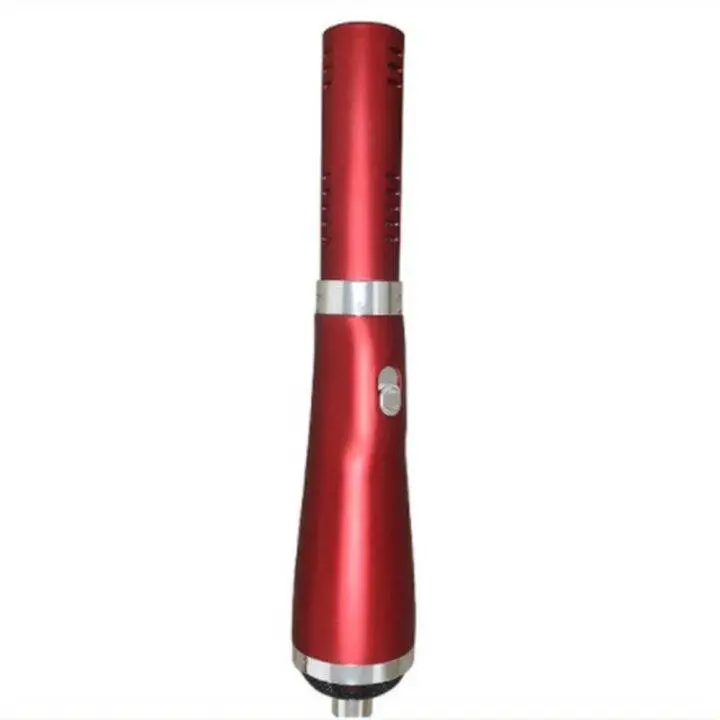
Beyond the direct capabilities of Teslacare, it’s helpful to situate terahertz therapy within a broader health-technology landscape. This section explores several broader implications, including how Teslacare relates to physiotherapy, and how users can think about integrating terahertz devices with other evidence-based therapies. The goal is to provide readers with a holistic perspective that informs smarter, more personalized decisions about health and wellness investments.
Teslacare vs Physiotherapy
Physiotherapy is a well-established discipline that emphasizes evidence-based practices, individualized treatment plans, and the use of manual techniques, exercise prescription, and modalities to improve function and reduce pain. When readers consider Teslacare in the context of physiotherapy, several questions arise: Can terahertz therapy replace certain physiotherapy components, or is it best suited as a complementary tool? How does Teslacare align with a clinician-guided plan, and what level of collaboration would be ideal?
From a practical standpoint, physiotherapy often provides structured progression, measurable outcomes, and professional oversight. Terahertz devices like Teslacare can support rehabilitation by offering at-home options to maintain momentum between clinic visits and to augment exercises or manual therapies prescribed by a therapist. The most productive approach frequently involves integrating Teslacare into a comprehensive rehabilitation program under the supervision of a healthcare provider. In this scenario, the device serves as a convenient adjunct that can help maintain tissue readiness, reduce residual discomfort, and support adherence to prescribed exercise regimens. For readers evaluating long-term strategies, the synergy between Teslacare and professional physiotherapy can yield a cohesive plan that addresses both symptom relief and functional recovery.
From a consumer perspective, Teslacare may offer value in terms of convenience, cost control, and accessibility. If a user is already engaged in a physiotherapy program, Teslacare could complement clinic sessions and provide additional home-based therapy time. However, it is important to recognize the boundaries of home-use devices and the importance of professional assessment when symptom progression occurs or when new concerns emerge. The decision to incorporate Teslacare into a physiotherapy plan should be guided by a clinician’s recommendations and aligned with safe usage practices and realistic goals. This collaboration helps ensure that the device contributes to long-term improvements in mobility and quality of life rather than simply providing short-term relief.
In evaluating the broader implications of Teslacare for physiotherapy, readers should consider aspects such as session scheduling, integration with exercise routines, and communication with care providers. A well-coordinated approach that leverages the strengths of both modalities can produce better outcomes, especially for individuals dealing with complex, multi-faceted conditions. The takeaway is that Teslacare is most effective when used as part of a structured therapy plan under appropriate guidance, rather than as a stand-alone replacement for professional rehabilitation. This perspective supports a balanced and evidence-informed approach to wellness, enabling readers to design personalized strategies that reflect their health goals and resources.
Other Alternatives and Comparisons
In addition to physiotherapy, readers may compare Teslacare to a range of other therapies and devices. Red light therapy, cryotherapy, ultrasonic therapy, and other energy-based modalities occupy similar spaces in the consumer wellness ecosystem, each with distinct mechanisms, evidence bases, and experiential differences. Evaluating Teslacare within this spectrum involves examining key attributes such as safety profiles, time commitments, portability, and the relative strength of supporting evidence. For readers who care about “best terahertz therapy device,” the decision may hinge on how closely a device’s claimed benefits align with personal needs and the credibility of the supporting information.
Another dimension to consider is how Teslacare and its peers fit into a comprehensive lifestyle plan. When evaluating “Buyer’s Guide” type considerations, it’s useful to look at the consistency of use, potential cost savings, and the capacity to support long-term wellness goals. If a device is easy to use, reliable, and backed by accessible customer service, it may contribute to ongoing adherence and real-world benefits over time. Readers who adopt a careful, planful approach to wellness are more likely to achieve durable outcomes that reflect the investment in a home-based therapy system.
Overall, the broader implications point to a prudent approach: treat Teslacare as a possible component of a diversified wellness strategy, one that acknowledges the value of professional care, evidence-based modalities, and disciplined self-care practices. By recognizing Teslacare’s place within a wider toolkit of therapies, readers can make more informed decisions about which combinations of therapies best serve their goals, preferences, and health status.
Conclusion
In this comprehensive exploration of the Teslacare terahertz device, we have examined the science, practical applications, pricing considerations, and safety considerations that shape the value proposition of this emerging wellness technology. The device presents a compelling option for individuals seeking a non-invasive energy-based approach to pain relief, skin health, and circulation support, particularly when used as part of a holistic health plan that includes exercise, nutrition, and sleep optimization. While the evidence base is still evolving and results will vary by individual, the Teslacare device contributes a meaningful option within the broader ecosystem of terahertz therapies, and it can be a thoughtful addition for those who want an at-home modality to complement professional care and daily self-care practices. Readers who pursue this path should remain focused on safety, informed usage, and realistic expectations, while actively seeking credible user feedback and staying attuned to any new clinical insights that emerge in this rapidly developing field. This balanced, evidence-informed perspective supports a cautious yet open-minded evaluation of whether the Teslacare terahertz device belongs in your personal health strategy, with the goal of smarter purchasing decisions, improved well-being, and a more informed approach to health technology.




